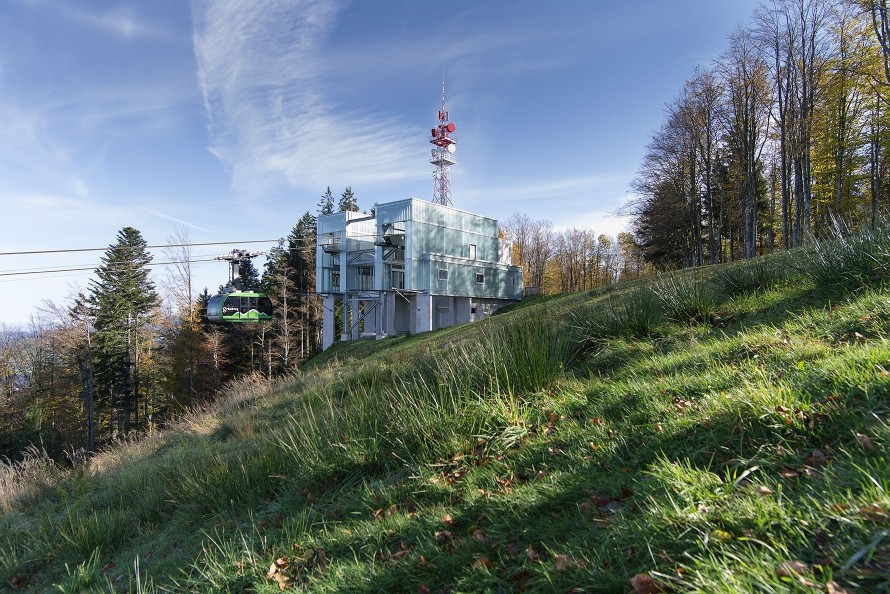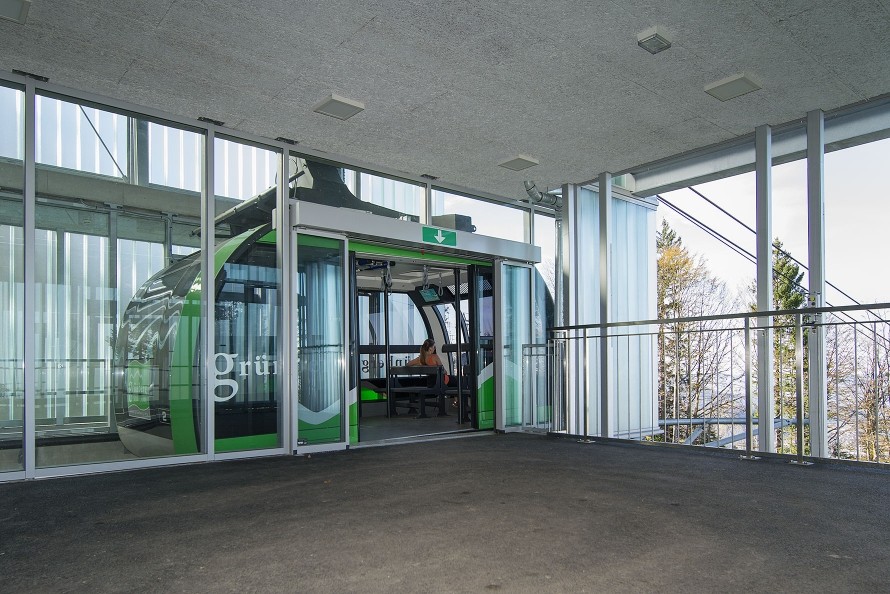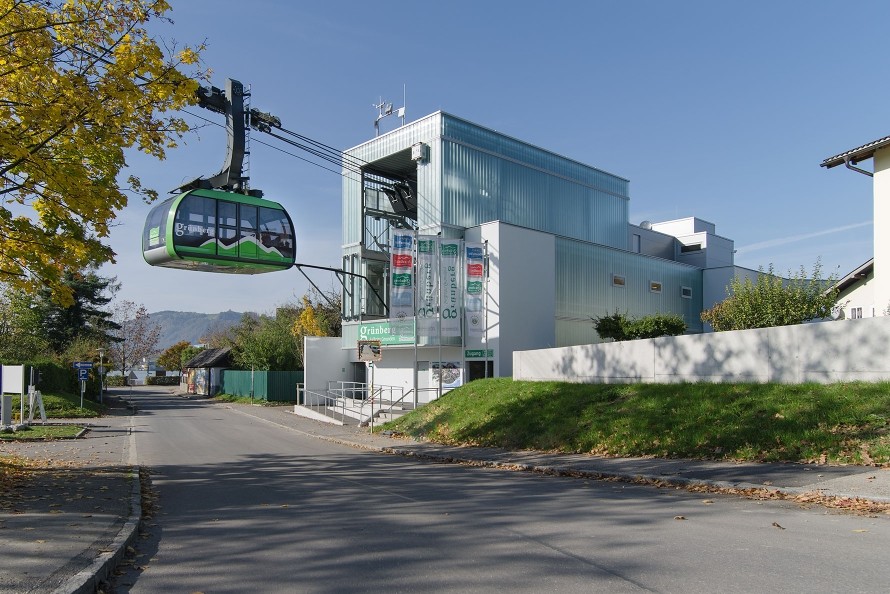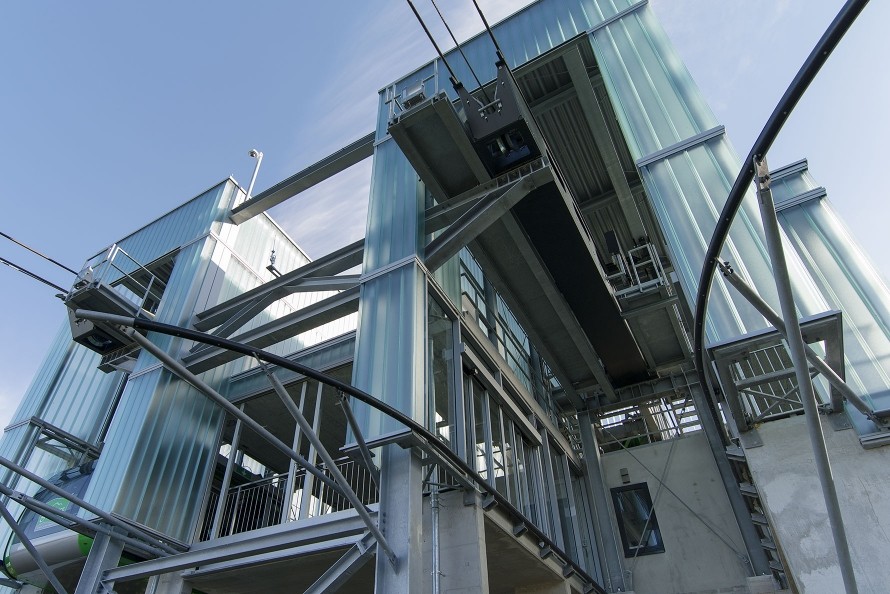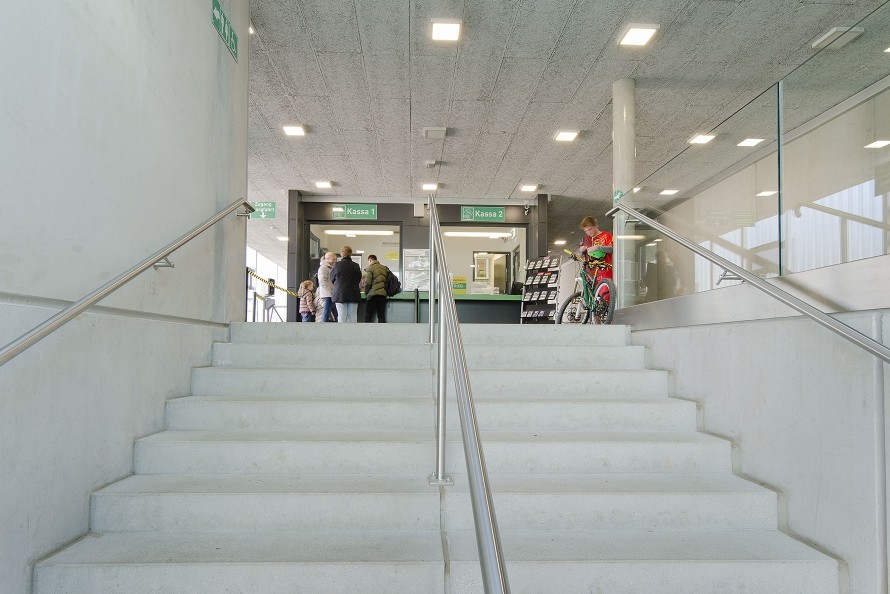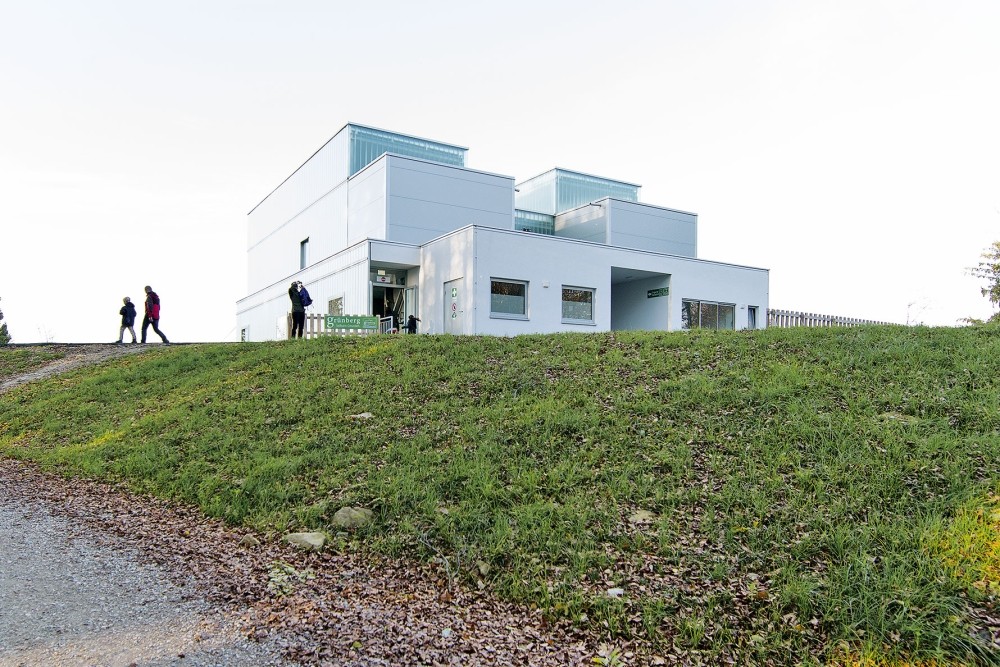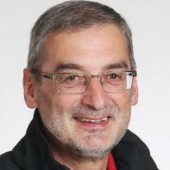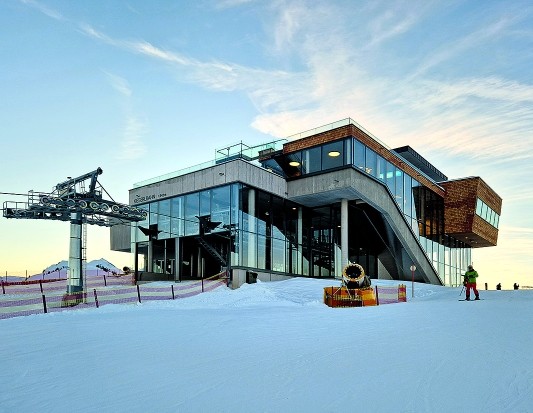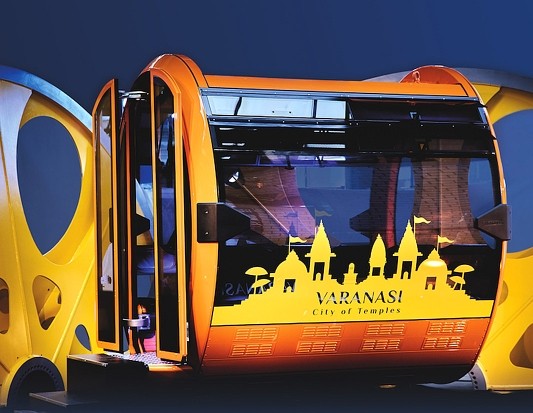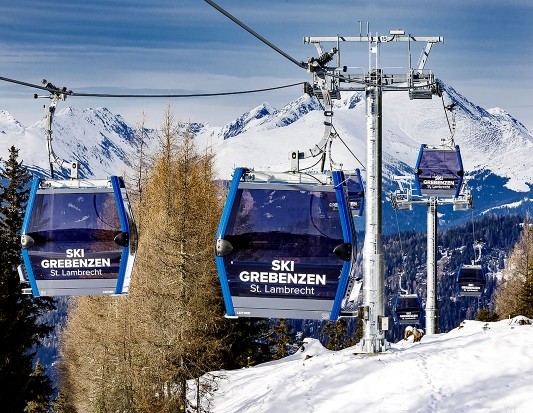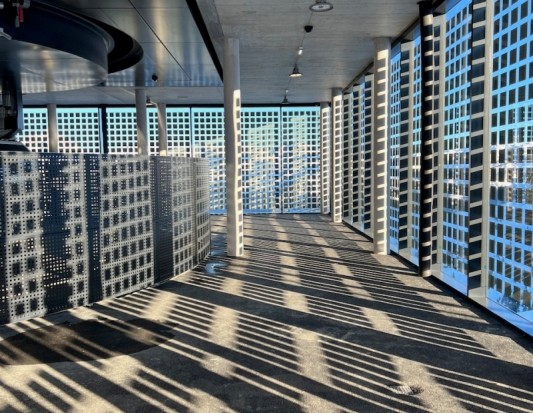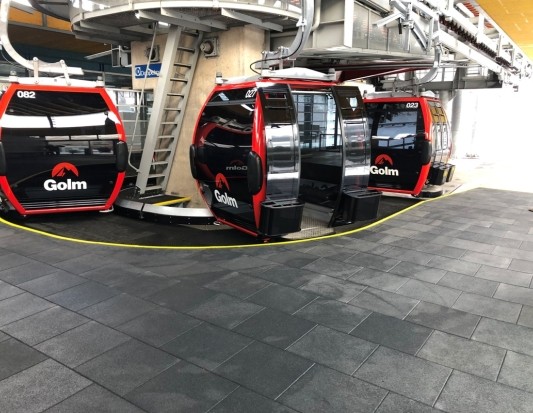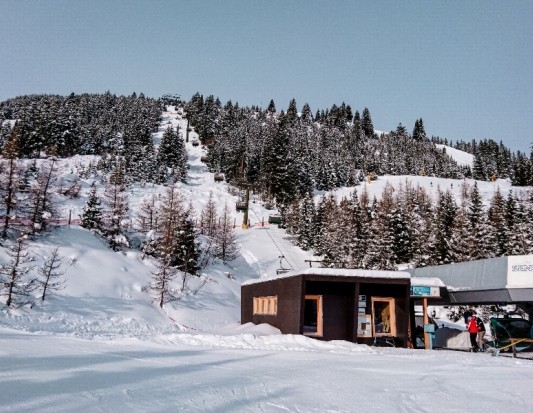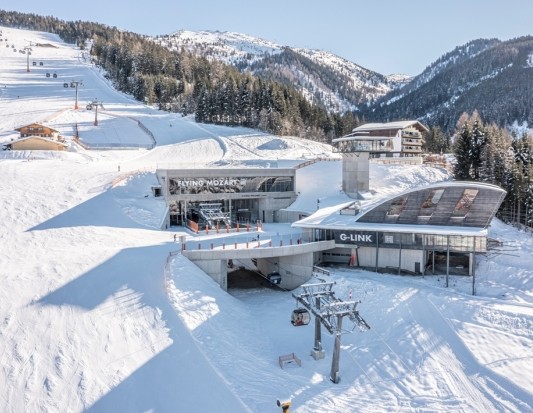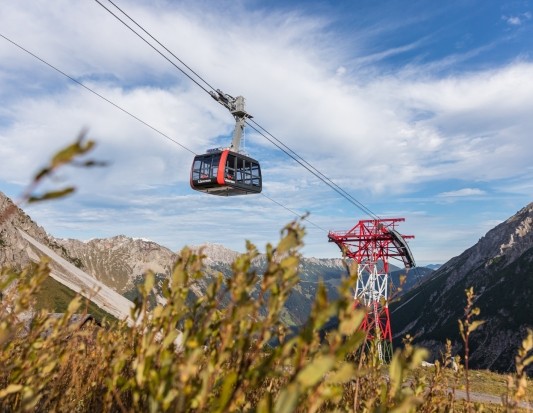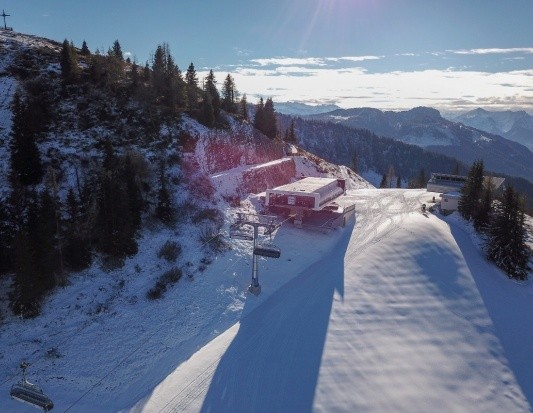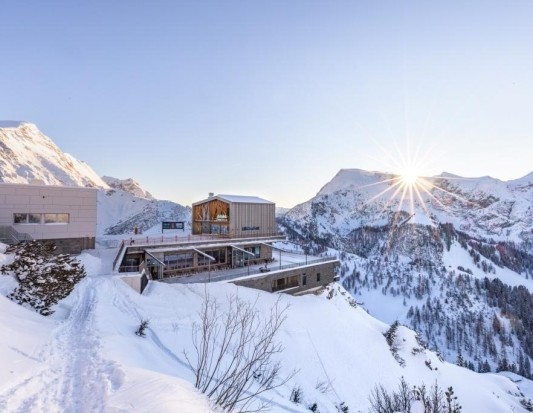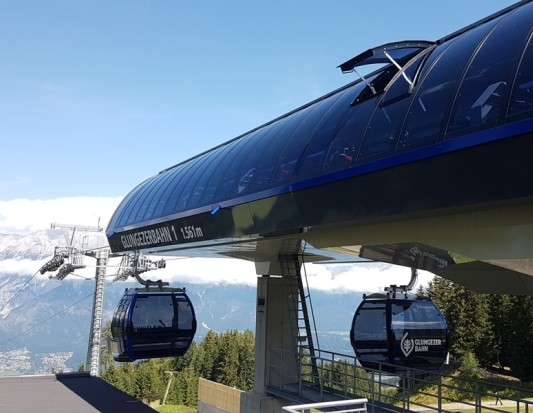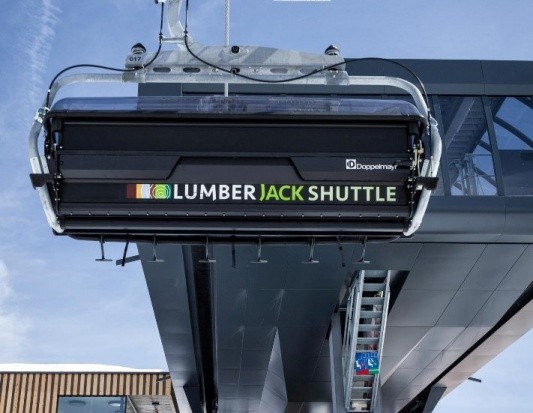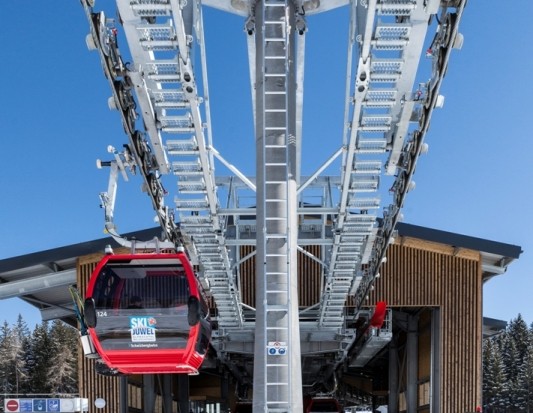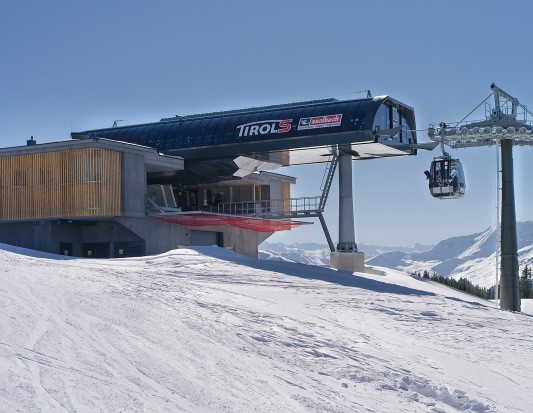60 Aerial tramway Grünberg
Gmunden
New cable car despite opposition from local residents
Already in its first season of operation, the Grünberg cable car has exceeded all expectations: Over 100,000 guests have already ridden the two-lane aerial tramway. For a while, it was questionable whether the project could be implemented at all: Landowners vehemently tried to prevent the construction. But the builders and Salzmann Ingenieure persevered and were finally able to realize the lift as planned.
Planning for the new construction of the Grünberg cable car began back in 2009. Previously, a 2-cable circulating cable car with 24 cabins took passengers up the Grünberg at Lake Traun in Upper Austria. However, this model had been in operation since 1954 and was accordingly outdated. Not least due to the measures taken as a result of the accident in 2004, expenditure on maintenance was constantly increasing.
"The Grünberg nature recreation area is a popular destination in our region," explains the managing director of Oberösterreichische Seilbahnholding GmbH, Alfred Bruckschlögl. "That's why it was very important for us to be able to transport our guests comfortably and safely again." In the course of the relaunch project, versatile leisure facilities were created, such as a summer toboggan run, cycling and mountain bike trails, and a low ropes course.
Services:
Project preparation and variant planning
Technical ropeway project planning
EU-wide invitation to tender for ropeway technology
Submission planning
Support in the approval procedure
Support in landowner negotiations
Detailed design and tendering according to BVergG
Project management
Routing retained
The clients commissioned Salzmann Ingenieure for the planning and implementation. At the beginning, the engineers from Bregenz examined whether it would make sense to change the course of the Grünberg ropeway. After weighing up the costs, approvability and benefits, the clients decided to retain the existing route and optimize the station locations.
Double-track reversible aerial tramway with two gondolas
In contrast to skiing operations, the transport capacity on the Grünberg is not as high. The lift is used almost exclusively by excursionists. However, at certain times of the day, for example after midday, the crowds are quite large; at other times of the day, passenger frequency is lower. Salzmann Ingenieure recommended an aerial tramway with two gondolas for sixty passengers each, as this system can be operated cost-effectively for the given requirements. "We can carry twice as many people at peak times as before," Salzmann explains. "The introduction of a flexible schedule makes it possible to meet varying demand."
Landowner opposition
When the project operator first presented the construction plan in 2010, there was a lot of resistance from landowners. "We met with the abutters for further negotiations and presented them with the current status of the project in each case," Salzmann reports. "This allowed us to listen to their concerns and, if possible, take them into account in the next planning steps."
The property owners demanded that the width of the new route not exceed that of the previous one. This posed a challenge: after all, the new gondolas are designed for sixty people, while the existing ones are for four. "We nevertheless found a solution and reduced the track width in the bottom station to the absolute minimum of 90 cm. Since the meeting point of the vehicles is located far up in Seilfeld 1, this extreme line guidance was possible," reports Salzmann. This made it possible to comply with the clearance requirements of the local residents.
In early 2011, Salzmann Ingenieure presented the plans again. "Although the narrowing of the route we proposed would actually bring improvements for most residents compared to the existing railroad, some particularly stubborn opponents still did not agree at first," Salzmann explains. Further negotiations and talks followed.
Expropriation possible
Since the Grünberg is an important attraction for tourists and locals, implementing the project was also in the public interest. Representatives of the city supported the project. Legally, even expropriation of the owners would have been possible under the Railway Act. When this realization filtered through to even the most bitter opponents, all property owners finally agreed to the project in mid-2012.
Because of the delay in the building permit, the manufacturers no longer had long-running components such as the gearbox in stock. That's why ground was not broken until spring 2013: the top and bottom stations were demolished and new ones built: The plans for this came from Salzmann Ingenieure. The new top station was moved downhill and integrates discreetly into the landscape. The building in the valley area, on the other hand, is urban and strong in design. As a catering business is directly adjacent to the bottom station, an optimized construction method had to be used to ensure that no sound would later be transmitted into the building of the catering business.
The lift was opened in early summer 2014: Instead of the expected 40,000, more than 100,000 people already rode the Grünberg cable car. "The efforts have paid off in full," reports Bruckschlögl. "The feedback has been very positive. A ride on the Grünberg cable car, which is glazed all around and offers a view of Lake Traunsee, is a great experience for our guests."
Anlagedaten
- Antrieb
- mountain
- Anzahl Stützen
- 2
- Bahnsystem
- Two-lane aerial cable car
- Fahrgeschwindigkeit
- 10 m/s
- Fahrstrecke gesamt
- 2.031 m
- Förderleistung
- 607 P/h
- Höhe Talstation
- 436 m
- Anzahl Fahrzeuge
- 2
- Höhe Bergstation
- 987 m
- Höhenunterschied
- 551 m
